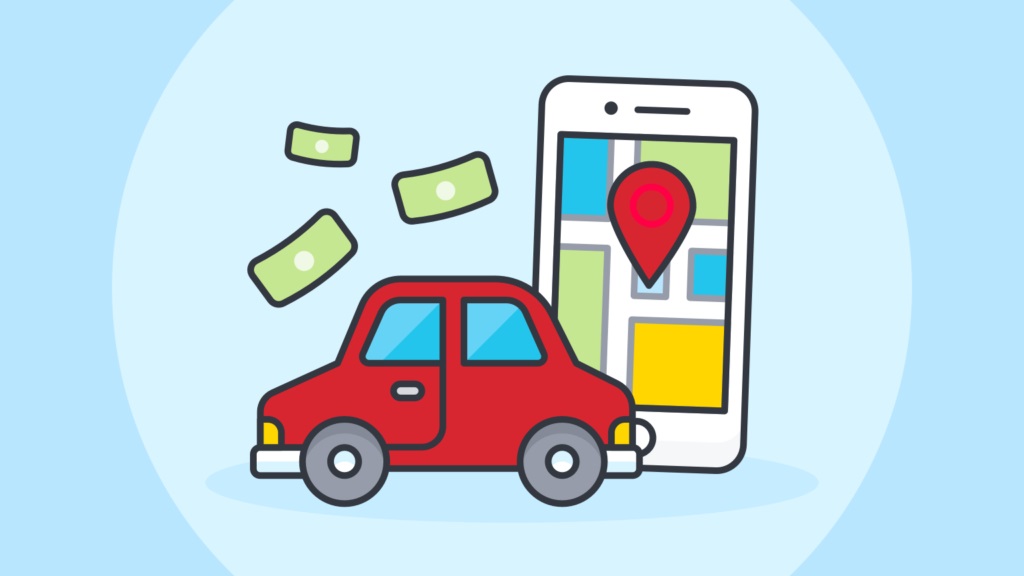As a gig worker, every mile driven for Instacart represents more than just time on the road it’s also a valuable tax deduction. With the cost of fuel, maintenance, and insurance rising, claiming the instacart mileage deduction in 2025 is one of the most effective ways to reduce your taxable income and increase your real earnings.
In this complete guide, we’ll cover how the mileage deduction works, which tools simplify the process, and what strategies Instacart shoppers can use to stay compliant and save money when filing their taxes.
Understanding the Mileage Deduction
The IRS offers self-employed workers the ability to deduct business-related vehicle use from their income. Rather than tallying every gas receipt or repair bill, the IRS provides a standard mileage rate projected to be 65.5 cents per mile in 2025 for calculating this deduction.
If you drive 15,000 miles for Instacart this year, you could claim a deduction of $9,825. This doesn’t reduce your income directly it reduces the amount of income subject to taxation, which results in real dollar savings.
This deduction is especially powerful for gig economy workers because vehicle use often represents one of their largest business expenses.
What Counts as Deductible Mileage for Instacart?
Only certain trips are eligible under IRS guidelines. Instacart shoppers can deduct any mileage related to fulfilling delivery tasks. This includes:
- Driving to the grocery store after accepting a batch
- Traveling from the store to the customer’s home
- Heading to another store for a second order in the same batch
- Returning to a delivery zone for the next available order
Non-deductible miles include commuting to your starting area if you haven’t yet accepted a batch, as well as personal errands or detours taken between deliveries. Being able to distinguish between business and personal miles is key, and tools that automate tracking help ensure accuracy.
The instacart mileage deduction guide provides clear examples to help you avoid mistakes in this area.
Why Accurate Tracking Is Essential
To legally claim the mileage deduction, you need to maintain a detailed and contemporaneous log of your business driving. The IRS requires:
- Date of the trip
- Purpose (i.e., Instacart delivery)
- Start and end locations
- Total miles driven
This information can be recorded manually, but manual logging is prone to errors, omissions, and inconsistency. That’s why many Instacart shoppers use GPS-based mileage tracking apps that automate the entire process. These tools detect trips automatically, categorize them as business or personal, and generate IRS-compliant reports.
Failing to keep accurate records could lead to denied deductions or audit issues, even if the miles were legitimate.
Best Tools for Mileage Tracking in 2025
The most reliable way to track your mileage is with an app that works in the background while you drive. In 2025, tools like Everlance are widely used by gig workers because they:
- Automatically detect and record trips using GPS
- Let you review and categorize drives with one swipe
- Calculate your estimated deduction in real time
- Export clean reports for tax filing
With Everlance, you don’t need to remember to start or stop a trip manually. The app does it for you, and it provides all the documentation you need to support your mileage deduction at tax time.
How to Use the Deduction at Tax Time
When it’s time to file, your mileage deduction goes on Schedule C of your tax return, which covers self-employment income and expenses. You’ll report the total number of business miles driven for the year and multiply it by the standard mileage rate.
You won’t submit your mileage logs with your return, but the IRS may request them if you’re audited. Having an exported report from a mileage tracking app makes it easy to back up your numbers.
In addition to lowering your federal income tax, the mileage deduction also reduces your self-employment tax an additional savings benefit that many new Instacart shoppers overlook.
Tax Strategies for Instacart Shoppers
To maximize your deductions and avoid surprises in April, here are some year-round strategies:
- Track from the first day of the year: Missing early mileage is missing money.
- Separate business and personal use clearly: The IRS won’t allow blended trip totals.
- Set aside tax money each week: Remember that Instacart doesn’t withhold taxes from your earnings.
- Log other expenses: In addition to mileage, you can deduct things like your phone bill (used for deliveries), tolls, parking fees, and gig-related supplies.
- Use one app for everything: A tool like Everlance can also help you track income, receipts, and expenses in one place.
These habits reduce the burden at tax time and make sure you’re getting every deduction you’re entitled to.
Common Mistakes That Hurt Your Deduction
Even experienced gig workers miss opportunities or make errors that could cost them money. Some of the most common mistakes include:
- Estimating miles at the end of the year rather than logging them in real time
- Forgetting to log return trips after deliveries
- Using the actual expense method without maintaining receipts
- Logging personal trips as business-related
- Not keeping backup records of trips and reports
By using a digital tool, you eliminate these mistakes and ensure your records are accurate and complete.
Starting Now Pays Off
If you haven’t tracked your mileage yet this year, don’t wait. The sooner you start, the more mileage you’ll be able to deduct next tax season. Even starting mid-year can result in meaningful tax savings.
The instacart mileage deduction guide gives you the steps to begin today. With automated tools, there’s no excuse to leave money on the table. The deduction is legal, straightforward, and extremely valuable if used correctly.
Conclusion
As an Instacart shopper in 2025, the instacart mileage deduction is one of the most effective ways to reduce your tax burden. With the high cost of vehicle use and the flexibility of gig work, mileage tracking is no longer optional; it’s essential.
By using the right tools, understanding the rules, and committing to accurate recordkeeping, you can take full advantage of the deduction and keep more of your income. Start tracking now, stay consistent, and when tax season comes, you’ll be glad you did.



